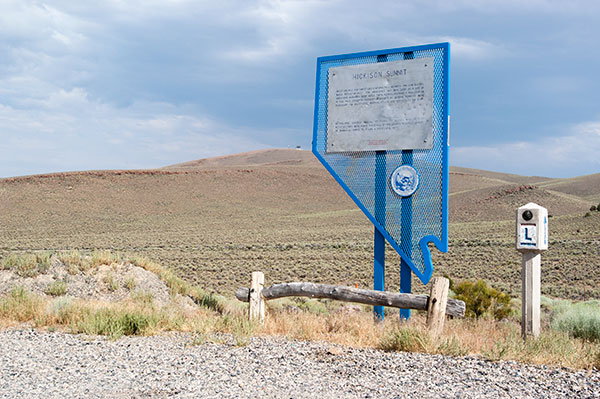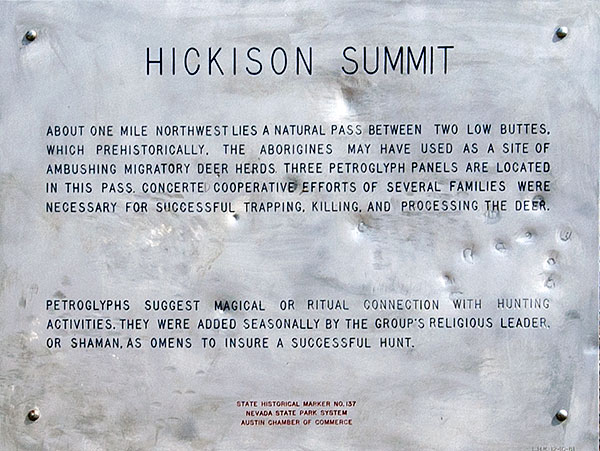Nevada Historic Markers in Lander County
Nevada Historical Marker 137
Hickison Summit
US 50 (The Loneliest Road in America)
39°26'39.7"N 116°44'36.0"W


(Click Photos to Zoom)
About one mile northwest lies a natural pass between two low buttes which, prehistorically, the aborigines may have used as a site of ambushing migratory deer herds. Three petroglyph panels are located in this pass. Concerted, cooperative efforts of several families were necessary for successful trapping, killing, and processing the deer.
Petroglyphs suggest magical or ritual connection with hunting activities. They were added seasonally by the group's religious leader, or shaman, as omens to insure a successful hunt.
State Historical Marker No. 137
Nevada State Park System
Austin Chamber of Commerce

The Lincoln Highway
The Lincoln Highway, conceived in 1912 and formally dedicated October 31, 1913, was the first road to cross the United States. It ran from Times Square in New York City to Lincoln Park in San Francisco passing through thirteen states: New York, New Jersey, Pennsylvania, Ohio, Indiana, Illinois, Iowa, Nebraska, Colorado, Wyoming, Utah, Nevada, and California.
In 1925, the US Bureau of Public Roads eliminated named trails and highways, and Lincoln Highway became drab series of numbers: US 1, US 30, US 40, US 50.
One of the last actions of the Lincoln Highway Association before it closed, was to order the casting of 3,000 concrete markers, to dedicate the highway to the memory of Abraham Lincoln. A rectangular head on top of a hexagonal shaped post, the markers featured the Lincoln Highway logo, a bronze medallion and arrows to indicate the route of the memorial highway. The US Bureau of Public Roads allowed the placement of these markers along the length of the old highway.
According to the 1916 edition of the Lincoln Highway Association Official Road Guide, a trip from the Atlantic to the Pacific was "something of a sporting proposition" and might take twenty to thirty days. Motorists were advised to top off their gasoline at every opportunity and to wade through water before driving through to verify the depth. Recommended equipment included chains, a shovel, an axe, jacks, tire casings, inner tubes and sundry tools. Firearms were not necessary, but west of Omaha full camping equipment was recommended.
Source: Lincoln Highway Association and others.
